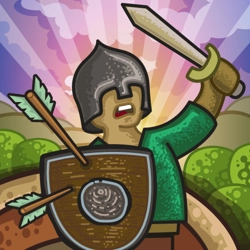Description:
In the world of extreme games, our favorite virtual champion is the heroic character in the dynamic game of Moto XM3. However, it is paramount to understand that our hero, in this adrenaline-pumping experience, cannot fly. As such, your vital role as a player is to guide, assist, and help him navigate through the thrilling multi-level terrain, which involves more than just racing on a two-wheeled asphalt beast.Each level of Moto XM3 is designed as an ascendant stair-like landscape, comprising of intricate platforms, symbolizing the steps that our daredevil hero must overcome. Indeed, the beauty of this game isn't found in the speed but rather in the strategy. Your job entails enabling this speedster motorcycle rider to leap effortlessly, carefully yet swiftly over these elevations, mimicking a courageous jumper rather than a frantic racer. Every jump is a fight against gravity, a contest with the laws of physics, and you must emerge victorious each time to proceed to the next level.
However, the road to glory in the riveting environment of the Moto XM3 is riddled with challenges and obstacles. One formidable impediment is the threat of flying boxes unleashed without any warning. These boxes carry a double-edged sword. On one hand, they encompass power-ups that can boost your performance and augment your progression. On the other hand, if unattended or mishandled, they can quite literally smash our brave moto-warrior, curtailing your journey in this exciting digital race.
Therefore, a crucial element in this game is always being alert and agile, keeping eagle eyes on the relentless stream of boxes soaring through the air. Navigating around them or positioning your character adroitly so as not to be pummeled by them forms the cornerstone of surviving in this fierce gaming landscape. Indeed, a player's vigilance and swift reaction time can significantly determine success in this exciting game of Moto XM3.
With a perfect balance of thrill and challenge, Moto XM3 is more than merely an extreme motorcycle game. It tests your reflexes, your control, and your strategic thinking as you support the hero in his quest to conquer every level. This isn't just about cruising on a powerful motorcycle; this is about strategy, agility, and resilience. And remember, our hero cannot fly. He needs you to elevate him, tap by tap, jump by jump through this electrifying Moto XM3 adventure to the ultimate triumph.
Instructions:
Press the screen to help the hero jump higher, release your finger to make the hero move normally to avoid flying boxes or move to other bricks.What are Browser Games
A browser game or a "flash game" is a video game that is played via the internet using a web browser. They are mostly free-to-play and can be single-player or multiplayer.
Some browser games are also available as mobile apps, PC games, or on consoles. For users, the advantage of the browser version is not having to install the game; the browser automatically downloads the necessary content from the game's website. However, the browser version may have fewer features or inferior graphics compared to the others, which are usually native apps.
The front end of a browser game is what runs in the user's browser. It is implemented with the standard web technologies of HTML, CSS, JavaScript, and WebAssembly. In addition, WebGL enables more sophisticated graphics. On the back end, numerous server technologies can be used.
In the past, many games were created with Adobe Flash, but they can no longer be played in the major browsers, such as Google Chrome, Safari, and Firefox due to Adobe Flash being shut down on December 31, 2020. Thousands of these games have been preserved by the Flashpoint project.
When the Internet first became widely available and initial web browsers with basic HTML support were released, the earliest browser games were similar to text-based Multi-User Dungeons (MUDs), minimizing interactions to what implemented through simple browser controls but supporting online interactions with other players through a basic client–server model.[6] One of the first known examples of a browser game was Earth 2025, first released in 1995. It featured only text but allowed players to interact and form alliances with other players of the game.



